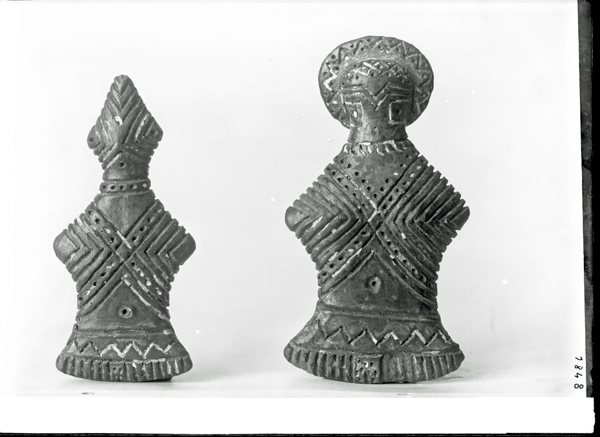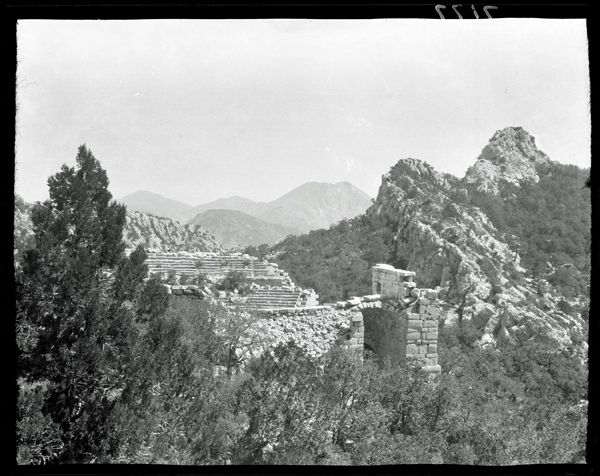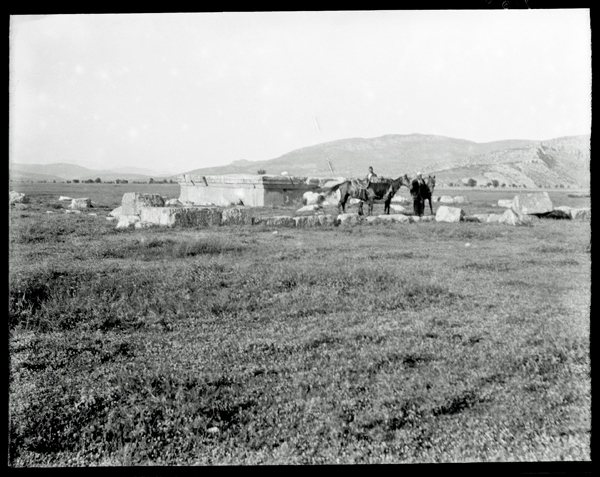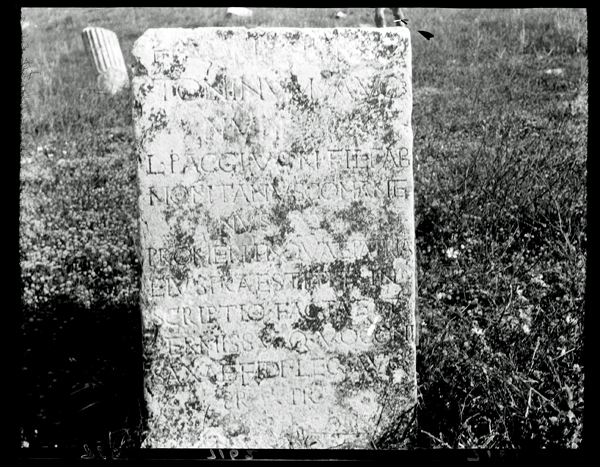Pisidian Figurines and the Search for Prehistory in S.W. Anatolia: Images from the BSA SPHS Photographic Collection
My previous post, Hasluck & Woodward in S.W. Anatolia, ended in 1909 when Frederick Hasluck and Arthur Woodward purchased two figurines while they were in the major harbour town of Antalya, the ancient city of Attaleia, on the south-west coast of Anatolia. This Archive Story tells the tale that these figurines set into motion.
The figurines were said to be from a mound site in Pisidia, an historic region north of Antalya. T.E. Peet was given permission to publish them by Hasluck and Woodward, and the publication promptly appeared in the second volume of University of Liverpool Annals of Archaeology and Anthropology of the Institute of Archaeology. (It is worth noting here that the significance of this journal is that it reflected the emerging discipline of prehistory in academia in the early 20th century and the nascent alignment of archaeology and anthropology.) The figurines were unusual at the time and Peet cast about for wider Balkan and Aegean comparisons. He pointed out that there was one other figurine that had been purchased in Antalya by traveller Henry Swainson Cowper, and published in 1900 by John Myres, who had experienced equal difficulty finding exact comparisons. Peet’s article is illustrated with a number of photographic plates and it is likely that the SPHS negatives donated by Woodward were produced for this publication.
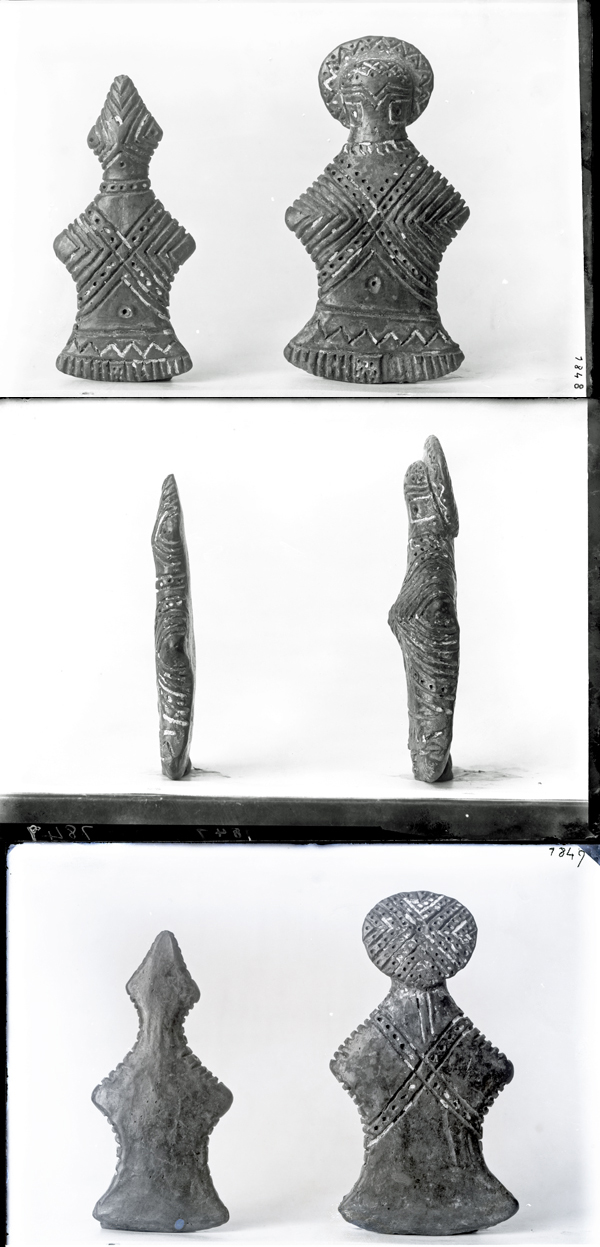
Psidian Figurines. Top to bottom: BSA SPHS 01/2990.7848 (front view), BSA SPHS 01/2989.7847 (side view), BSA SPHS 01/2991.7849 (back view).
The article by Myres on an the Antalya figurine purchased in 1900 initially raised the question of the possibility of prehistoric remains in this part of Anatolia which was not well known at the time. That figurine is now in the British Museum (registration number 1900,1212.11) and is dated to ca. 5000 BC. Peet reinforced this notion of prehistoric remains to be found in the area nine years later with the publication of the figurines purchased by Hasluck and Woodward. It was this search for little-known prehistoric sites in this region of Anatolia that led Woodward to return to the Antalya area during the summer of 1910, this time bringing with him BSA student, Henry Ormerod.
Woodward and Ormerod published their findings in an article in the Annual of the British School at Athens (ABSA) that same year. In the first paragraph, they clearly stated that their main purpose was ‘to search for prehistoric remains in the district lying to the west of Adalia (Attaleia in Pamphylia), namely in northern Lycia, south-western Pisidia and southern Phrygia’. The article is split into three parts. The first part, written by Woodward, focused on the journey with a discussion of topography and monuments. Woodward’s images in the SPHS collection from this journey record the historic sites of Termessos and Komama which he discusses in the text.
Given Woodward’s epigraphic interests, it is not surprising that he mentions finding and recording inscriptions throughout. This is not an unusual practice as many travellers would make note of inscriptions, often making exact copies, as a way of expanding the known corpus. Part III, at the end of the article is a discussion by Woodward on inscriptions they encountered, including one that Woodward photographed just outside of Komama. He later published more inscriptions from the Pisidian area in the 1910-1911 ABSA. Ormerod was not immune to this tradition and he later published two articles (co-authored by E.S.G. Robinson) on inscriptions from Lycia and Pamphylia in the ABSA and The Journal of Hellenic Studies (JHS).
Part II of the article, however, is the crux of their journey. It is written by Ormerod and describes the prehistoric remains in an alluvial valley between Termessos and Komama, near the small town of Istánoz (modern Korkuteli) located 56km north-west of Antalya (see map below). According to the Annual Report in the ABSA, Ormerod’s particular interest was in prehistory. He had spent part of his year at the BSA with Alan Wace and Maurice Thompson in Thessaly aiding them in their ‘magoula hunting’ – the survey of prehistoric mounds – that would be published in 1912 as Prehistoric Thessaly: being some account of recent excavations and explorations in North-eastern Greece from Lake Kopias to the borders of Macedonia, a milestone in Aegean prehistory. Ormerod also spent time studying prehistoric pottery at Knossos and on the Cycladic island of Paros. It is not surprising that Ormerod deployed the skills he learned in S.W. Anatolia.
In addition to surveying and plotting prehistoric mounds, Ormerod and Woodward collected and examined material. Ormerod had some of the pot sherds chemically analysed. Although not unknown at this time, scientific analysis of ceramics was still in its infancy. The analyses shed light on the production of the pottery, specifically on firing techniques, but also allowed Ormerod to make comparisons with pottery fabrics from the Troad. Ormerod also mentioned John Myres’ theory laid out in the same article in which he published the early Pisidian figurine mentioned above, that the ‘red ware’ was an indicator of the advancement of the copper age, putting the pottery into a relative chronological sequence, and that it pointed to probable connections with copper-rich Cyprus.
In the following year, Ormerod returned and examined two mounds further north, publishing his finds in the ABSA with a particular emphasis on pottery and stratigraphic sequences. Although images of pottery appear in that publication, there are no negatives from Ormerod in the BSA SPHS image collection. In 1914, he presented 13 Bronze Age sherds to the British Museum that are mentioned in Forsdyke’s catalogue (numbers A 71.1-6 and A 72.1-7) from the site of Senirdje in northern Pisidia, one of the two mounds he investigated (see the British Museum’s online collections page of objects related to H.A. Ormerod).
Ormerod highlighted the significance of this work, particularly in relation to the Aegean, shortly after his 1911 journey in a two-page article that appeared in The Classical Review (1912). Here he pushed the date of an overland trade-route connecting Cyprus with the Aegean back into prehistory. The historical route, initially proposed by William Ramsay, went from from the Cilician Gate on the Mediterranean coast opposite Cyprus to the Maeander Valley which led to the Aegean coast. Ormerod demonstrated that their finds from the interior of S.W. Anatolia – particularly Melian obsidian – were part of the body of ‘mounting evidence’ of prehistoric contact. This, he said, was also borne out by the distribution of mound sites – including those he and Woodward discovered – that suggested the advantages of a trade-route had been known from a much earlier time. Thus, the chance purchase of two Pisidian figurines in Antalya in 1909 led to survey work by Woodward and Ormerod through which they achieved their initial goal to locate prehistoric remains in this little-known area of S.W. Anatolia which, in turn, shed light on early connections with the Aegean.
Deborah Harlan
British School at Athens
Images from the BSA-SPHS collection are available on the BSA’s Digital Collections page.
Click here for more BSA Archive Stories.
Further Reading:
Forsdyke, E. J. 1925. Catalogue of the Greek and Etruscan Vases in the British Museum (Vol. 1.1 Prehistoric Aegean Pottery) London: British Museum.
Myres, J. L. 1900. ‘A Primitive Figurine from Adalia’, Journal of the Anthropological Institute of Great Britain and Ireland 30: 251–256.
Ormerod, H. A. 1911, ‘Prehistoric Remains in South-Western Asia Minor. II’, Annual of the British School at Athens, 18: 80–94.
Ormerod, H. A. 1912. ‘A Note on the Eastern Trade-Route in Asia Minor’, The Classical Review, 26(3): 76–77.
Ormerod, H. & Robinson, E.S.G. 1910-1911. ‘Notes and Inscriptions from Pamphylia’, The Annual of the British School at Athens, 17: 215-249.
Ormerod, H. A. & Robinson, E.S.G. 1914.’Inscriptions from Lycia’, The Journal of Hellenic Studies 34: 1-35.
Peet, T.E. 1909. ‘Two Prehistoric Figurines from Asia Minor’, University of Liverpool Annals of Archaeology and Anthropology of the Institute of Archaeology 2: 145-148.
Woodward, A. M. & Ormerod, H.A. 1909-1910. ‘A Journey in South-Western Asia Minor’, Annual of the British School at Athens, 16: 76–136.
Woodward, A. 1910-1911. ‘Inscriptions from Western Pisidia’ ,The Annual of the British School at Athens, 17: 205-214.
